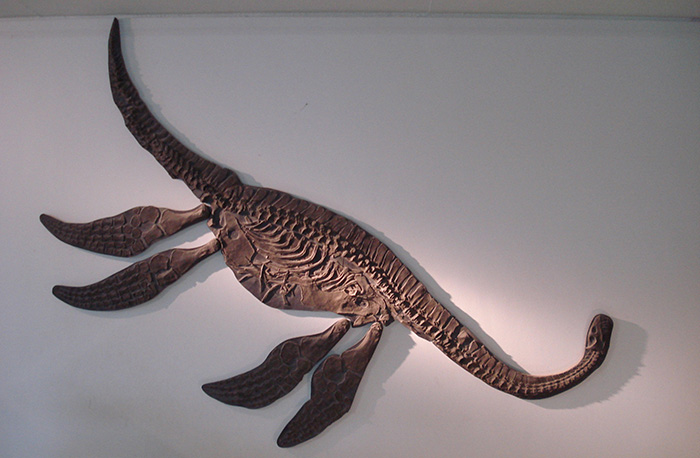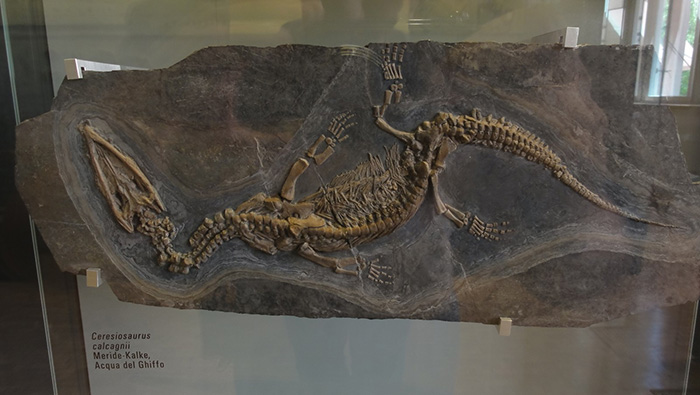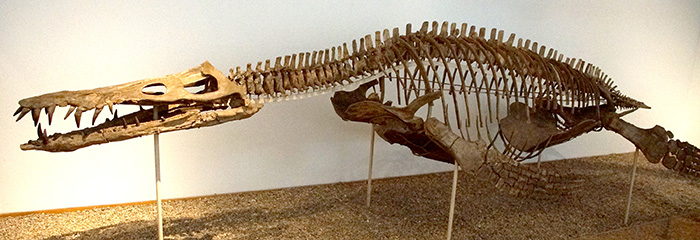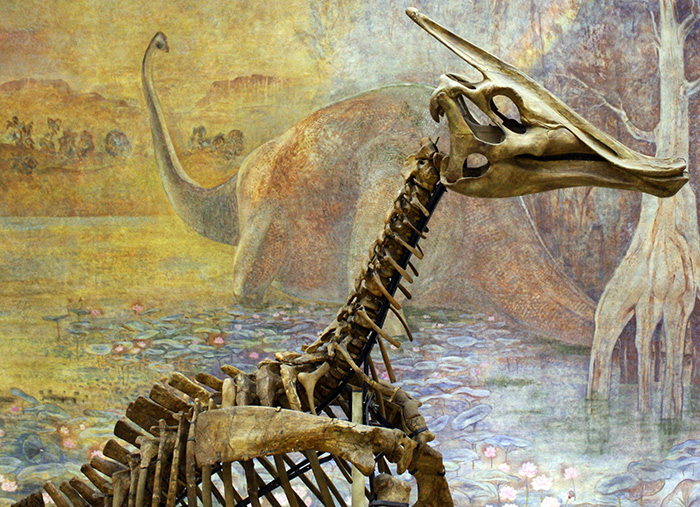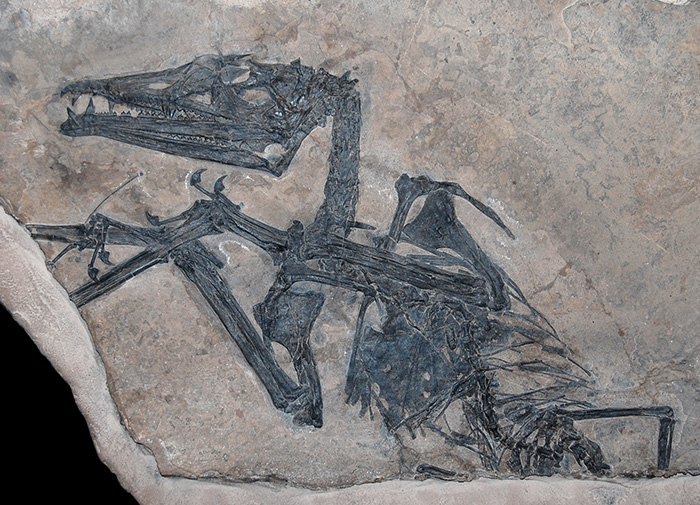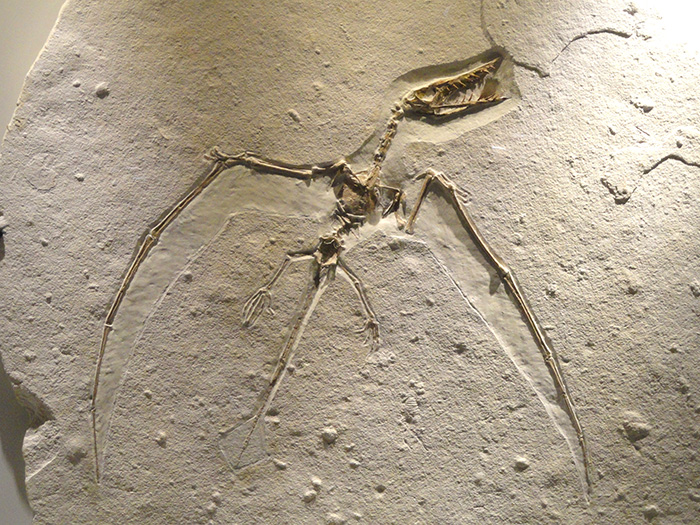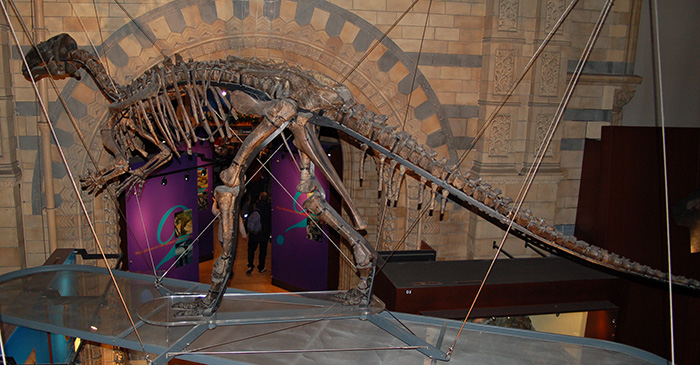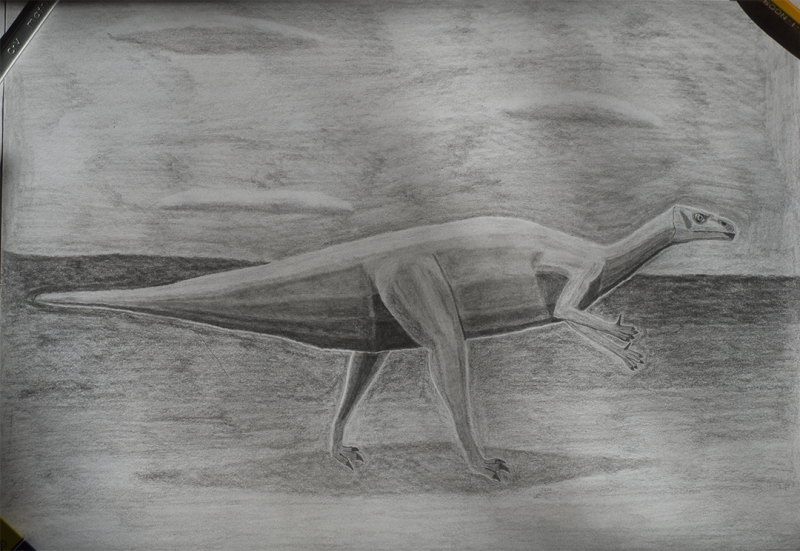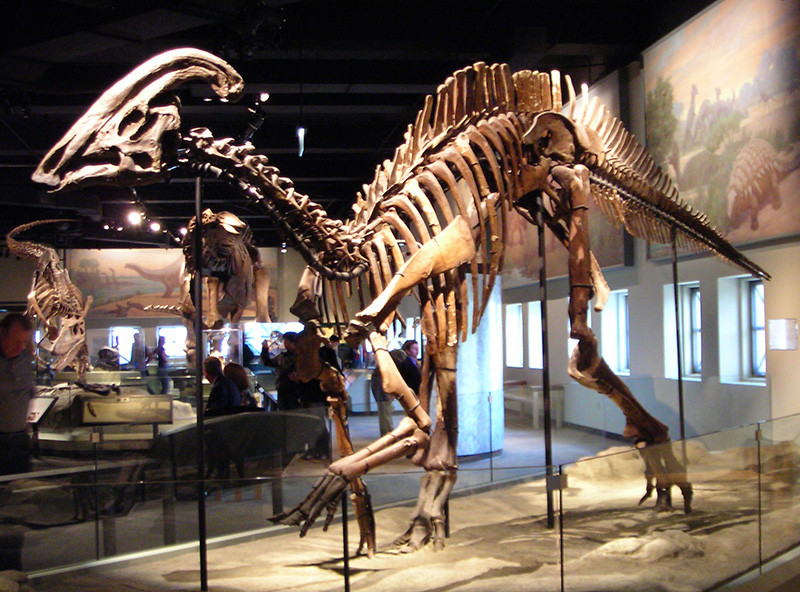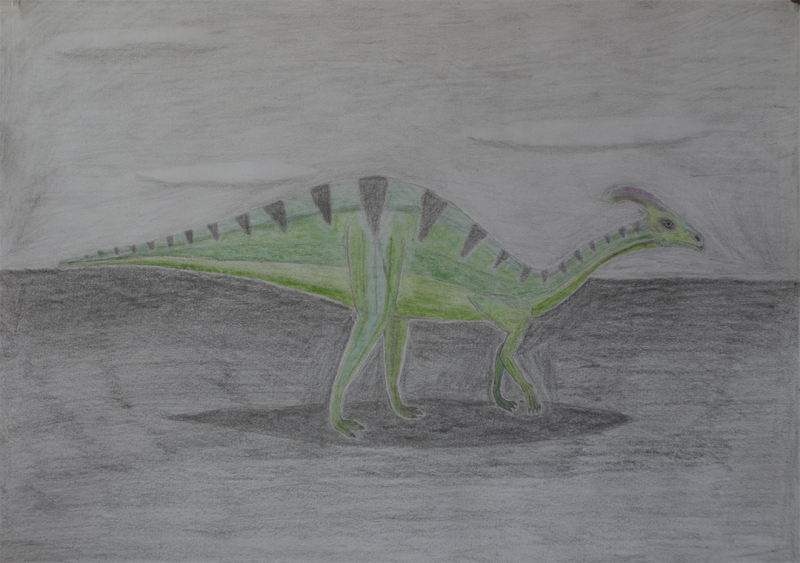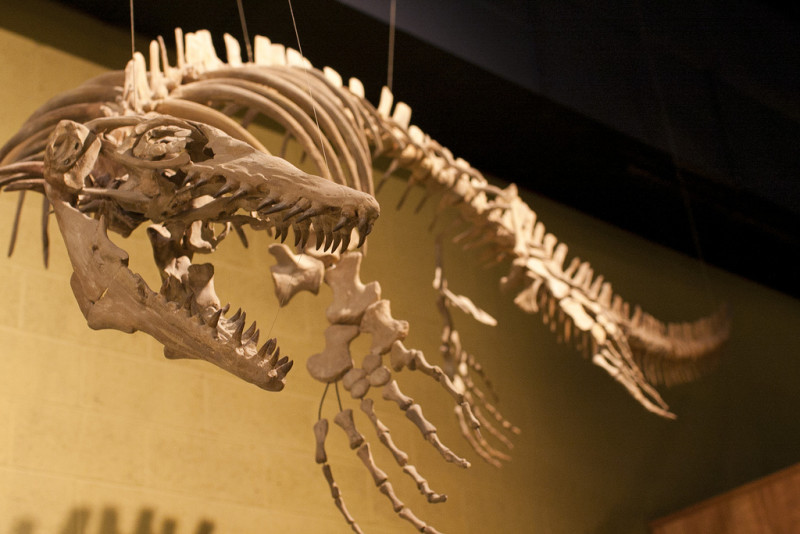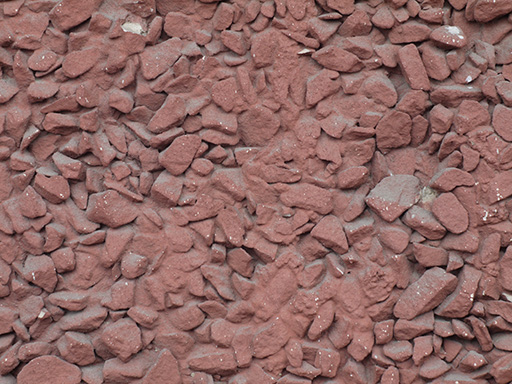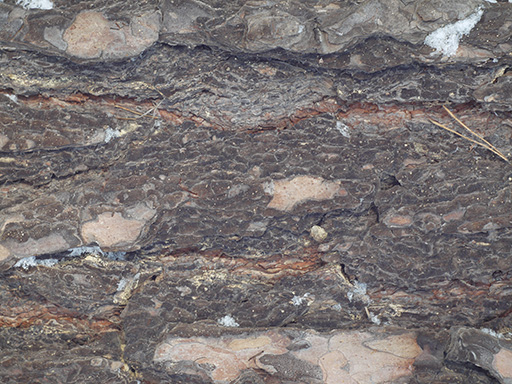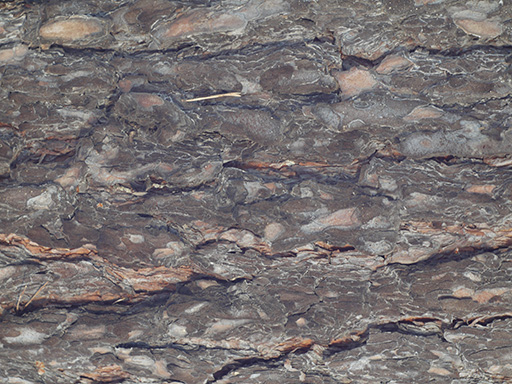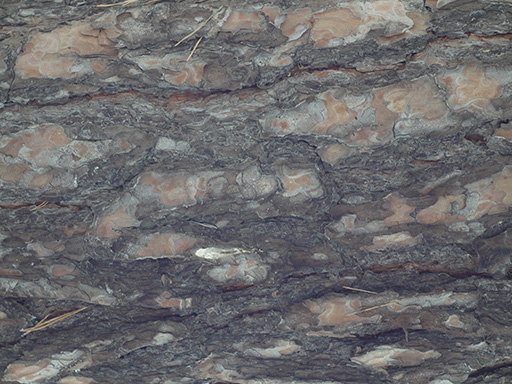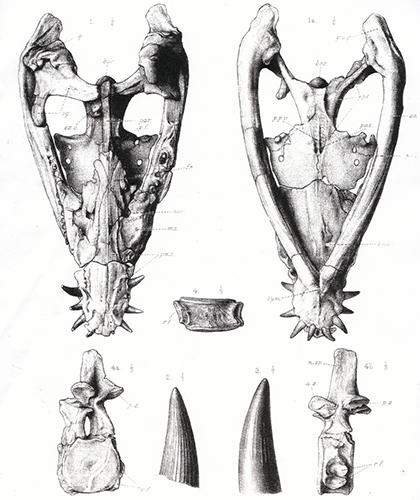
One of the plesiosaurs of Jurassic period of Mesozoic era is a simolestes – 6 m marine predator with 1 m skull and pack of teeth on ends of jaws. Earlier it was thought, that animal hunted on large prey and teared off large chunks of meat by rotating, like today’s crocodiles do; but modern studies show, that simolestes’ jaws were not so strong and they ate mostly mollusks, fishes and other small reptiles. They had 2 pairs of paws-fins, with which they made simultaneous or alternating swings, like other plesiosaurs did; modern simolestes’ bones studies show, that they belonged to true plesiosaurs and not to the earlier primitive forms.
Simolestes had short neck, broad jaws and short tail, which make them typical pliosaurs, belonging to plesiosaurs. During life their teeth were positioned much more vertically, then fossilized skull of almost complete skeleton of reptile has; their rotation to outer sides is caused by crushing and deformations of skull during millions of years in Earth‘s crust. Fossils of animals were found in England and France, and also India. For the first time they were described in 1877 year by Richard Lydekker.
